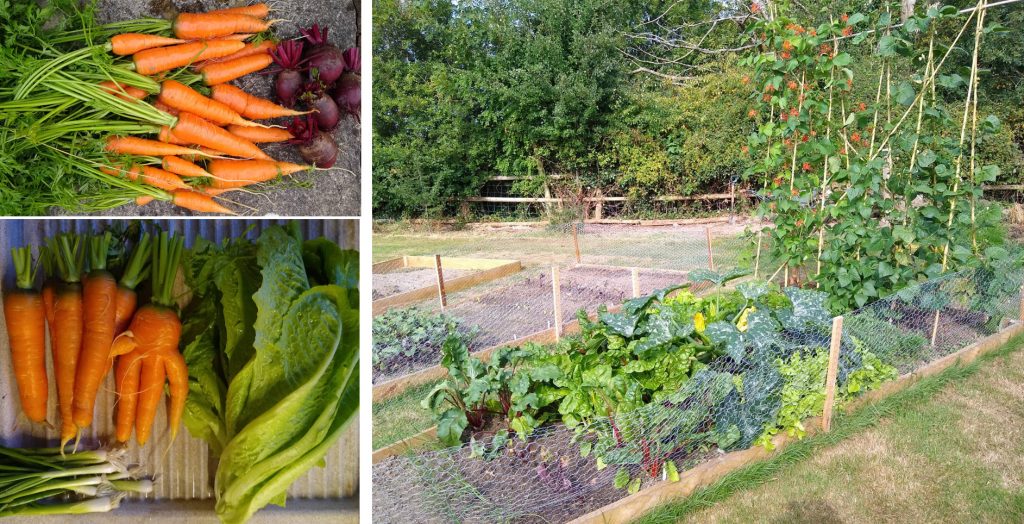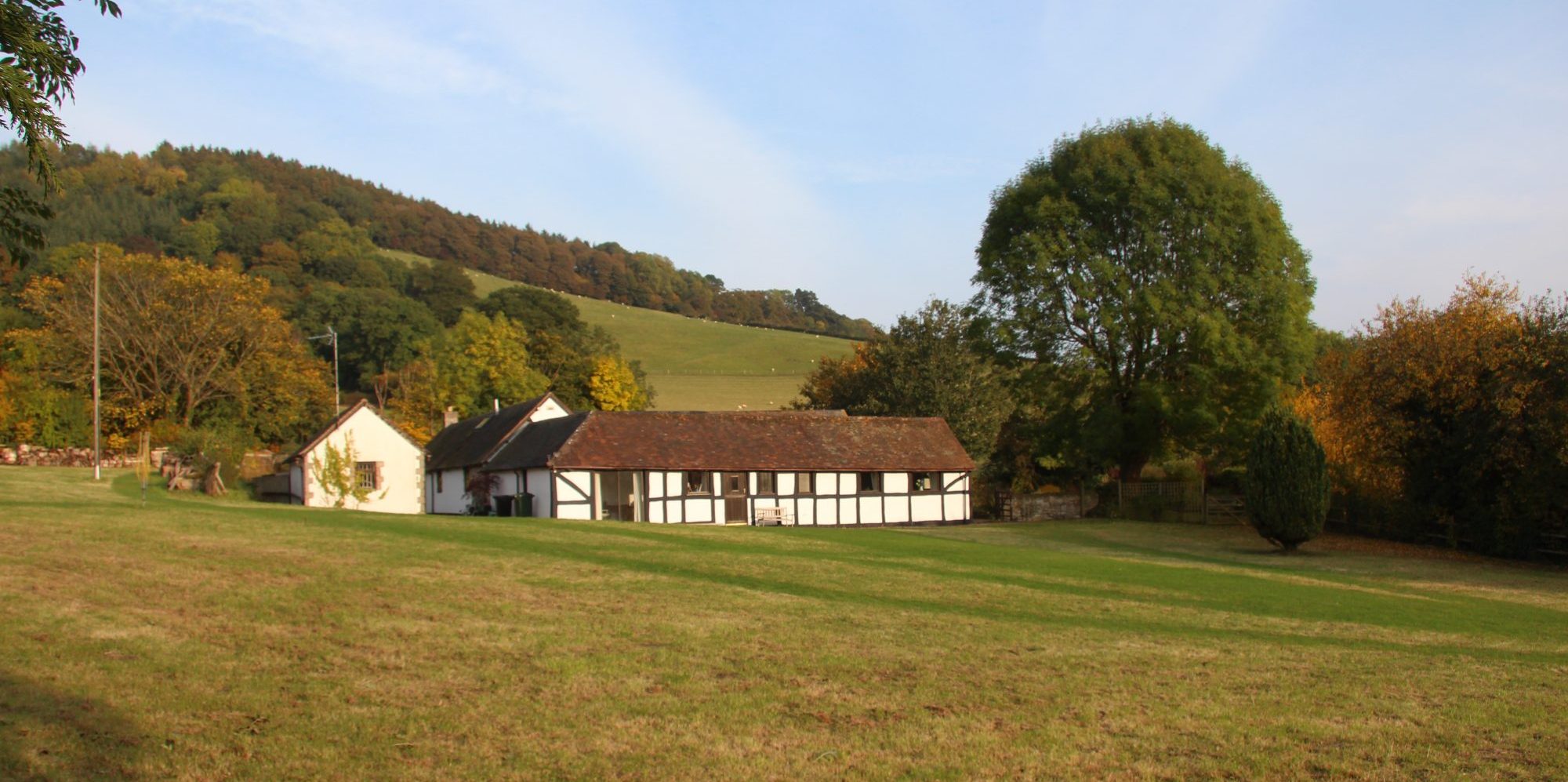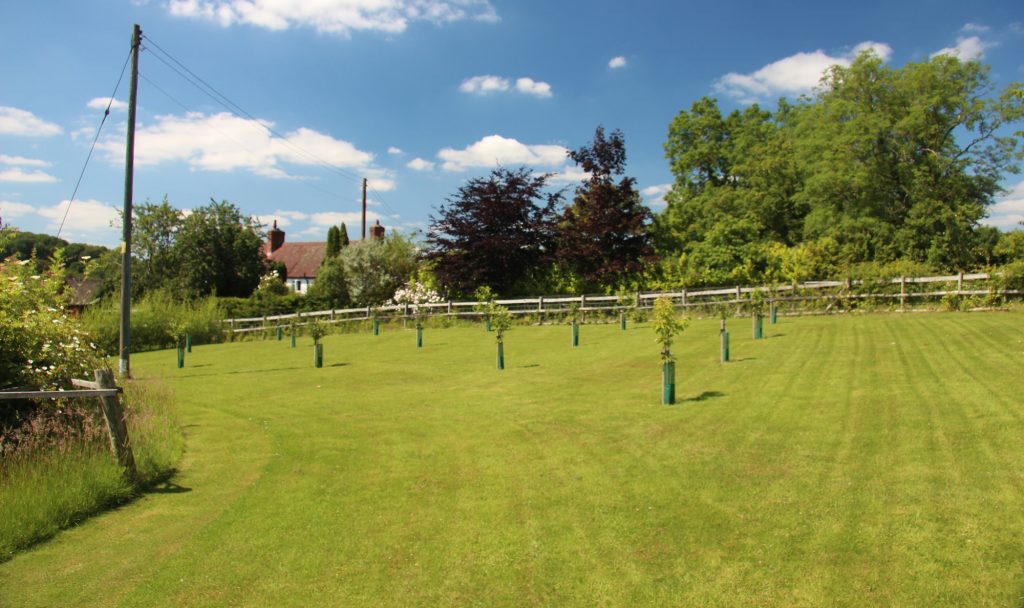
As we prepared to move to Shropshire, I drew up plans for the garden. A key part of that plan was for the area behind the house – the site for the orchard and vegetable plot. The fruit trees were planted in our first winter – in a rectangular grid – the beginnings of our orchard. This left the ground nearest the house, which swept round the outbuildings, to await its transformation into a kitchen garden. But this transformation was postponed whilst my attention turned to planting trees, planting shrubs, creating herbaceous beds, erecting fences and building walls. And so, it wasn’t until late May 2020 that we started on our kitchen garden.
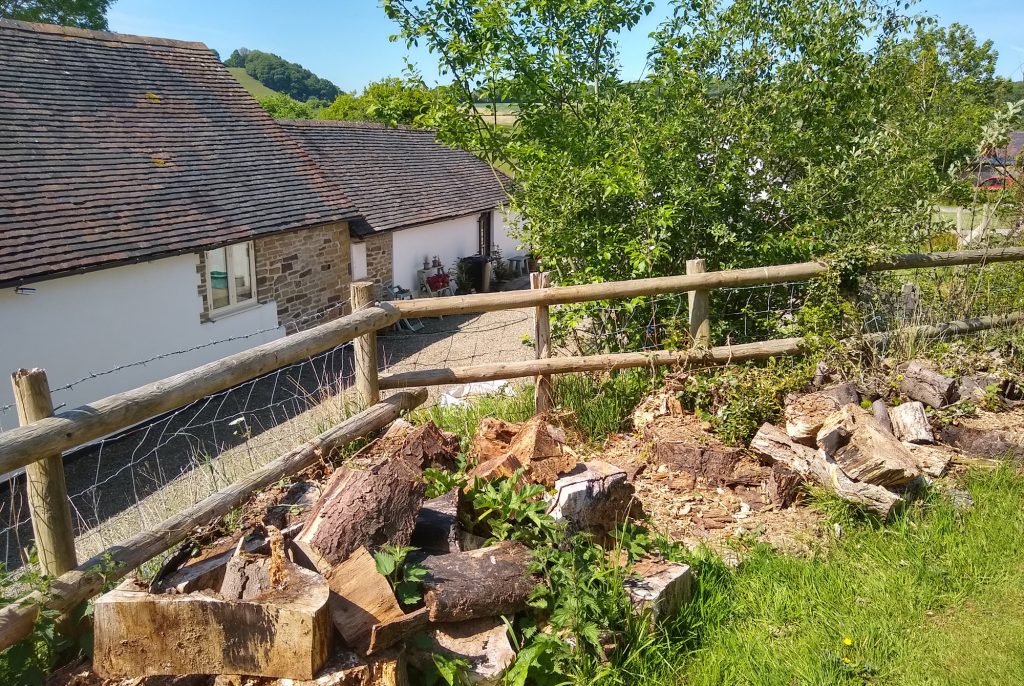
When we arrived, along the fences on the south and east side of this part of the garden, were piled many huge logs and slices of tree trunks. Some of these we have manged to split and use in the log burner; those too hard to split have been used as informal seats or features around the garden; and their bark has been used for paths amongst the shrubs. But there remained many which were too soft to burn. These logs needed to be cleared to give more space for produce and also to give access for my planned steps up the bank from the back of the house (more of that later). So, over a number of days – and in fact we still haven’t completely finished – we set about shattering these soft logs, collecting the fragments in a large builder’s bag to be used later as mulch to improve our clayey soil.

We could now turn our attention to the layout of the kitchen garden. Although it is behind the house, the ground here is higher, in line with the roof. This means it gets sunshine as soon as the sun is above the hills and is in full sun until sunset. Also, being higher it so not as waterlogged as lower down in the garden. I hope its position will encourage it to be productive. Being up behind the house, tucked round the corner at the top of the orchard, means it is not in direct view from the main part of the garden, so should it ever look unkempt it will be out of view. But equally it is quite close to the back door – at least as the crow flies; initially it was quite a walk around the from the back of the house, around the new wall, past the pergola and up through the orchard – hence my plans for some steps (details coming soon).
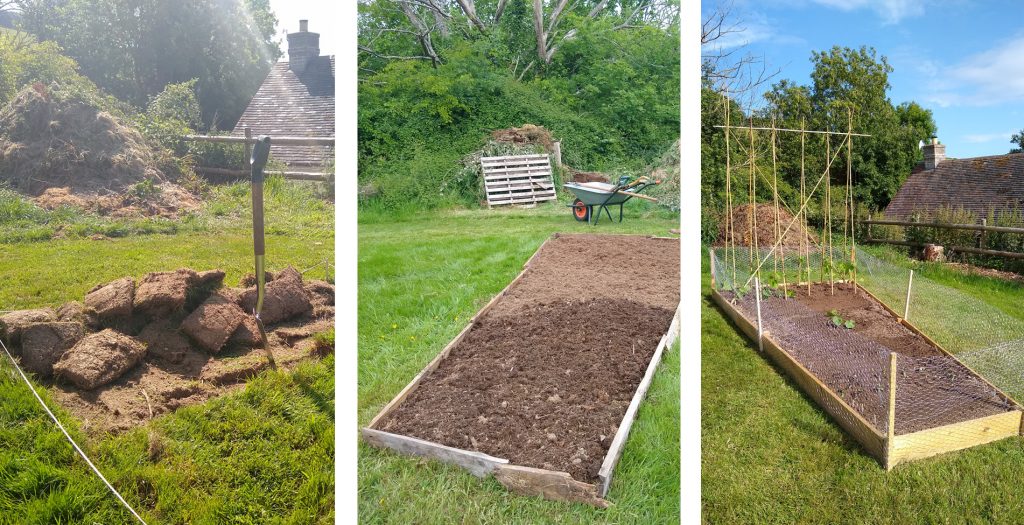
After much debate, we settled on three raised beds to start with, and the process of digging up and burying the turf started – a laborious and tiring process of which I was now only too familiar. In this top corner we had during our time here, added to a large pile of grass cuttings, and I had also made a pile of grass turves which I had not buried in new beds elsewhere. These turves had, I was pleased to discover, composted down, so now this home‑made compost along with compost dug from the grass clipping pile was used to fill our new raised beds. I was of course aware that I was importing innumerable weed seeds – but what could be done? The vegetable growing season was well advanced by the time we were able to plant up our first bed – but nevertheless in went runner bean seedlings and a courgette plant, and seeds sown for radish, spring onion, lettuce, swiss chard, beetroot and carrot. We fixed chicken wire around each bed to keep out the rabbits! Now we could sit back and wait for our bounty – could we not?
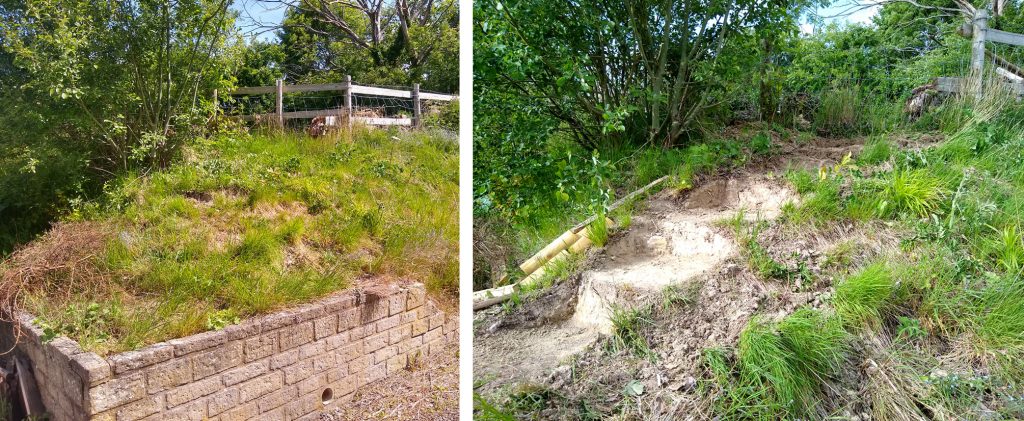
Well of course not. I wanted to be able go back and forth to the kitchen garden quickly. There is a steep bank behind the house (the retaining wall has collapsed in many places – providing bricks with have been useful in many places, such as edging the lavender hedge). Ultimately, I’d like to make more of this bank: terraced vegetables? wildflowers? But that is a longer‑term project – my ideas for that are embryonic. However, steps up this bank to the kitchen garden were part of my initial plans, and now they were necessary. The bank is full of grasses and pernicious weeds, but I needed to do this quickly, so we removed a piece of the fence at the top of the bank and I roughly dug out a flight of wide, deep steps in the slope.
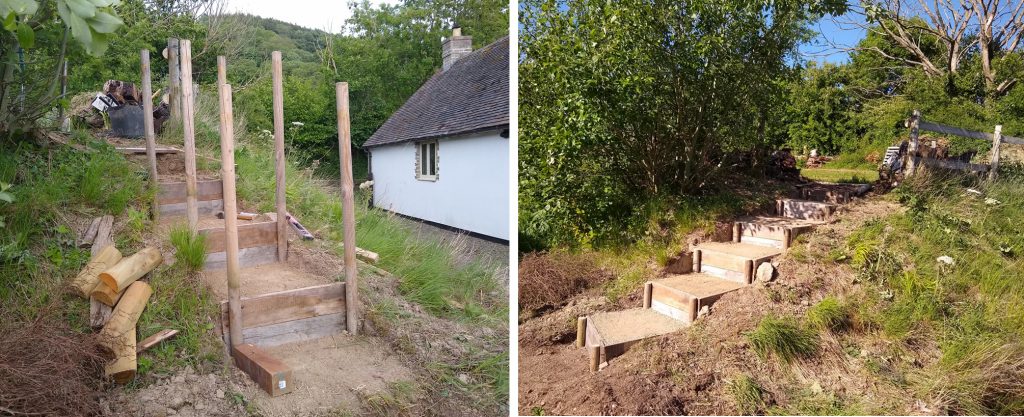
The soil was retained using tree stakes which were no longer in use and pallet wood, creating rustic steps, surfaced using gravel left over from when the drive was redone. The steps led down to the retaining wall – the shorter side which seems to be stable. The wall at this point is almost a metre high, so more pallet wood and offcuts were used to construct three wide wooden steps up and over the wall. A white butler sink and an old rusty wheelbarrow were positioned at the side of these wooden steps and planted up with herbs and succulents, to continue the rustic theme.
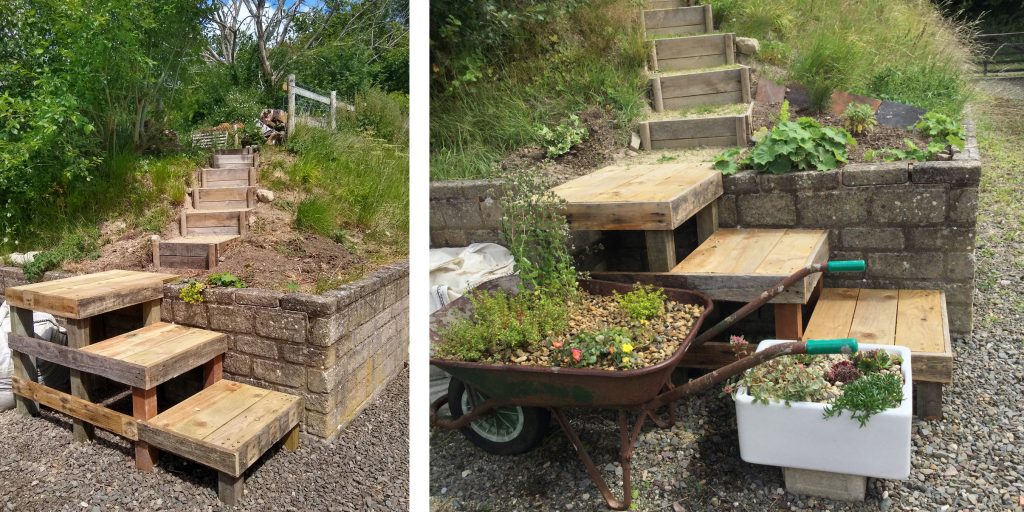
It was by now August, and two raised beds were fully productive – beetroot, spring onions, radish, carrots and lettuce were all excellent, and I was harvesting them regularly. The runner beans were doing well – until winds blew them right over – the plot has proved to be less sheltered than I had thought, so ways to provide windbreaks are being considered. By sewing carrots late, we appear to have avoided carrot fly, and in fact I have been harvesting carrots and spring onions right through the winter – the last few are about to be harvested as I write in February! Not bad for our first season.
Perhaps now we can sit back and relax?
